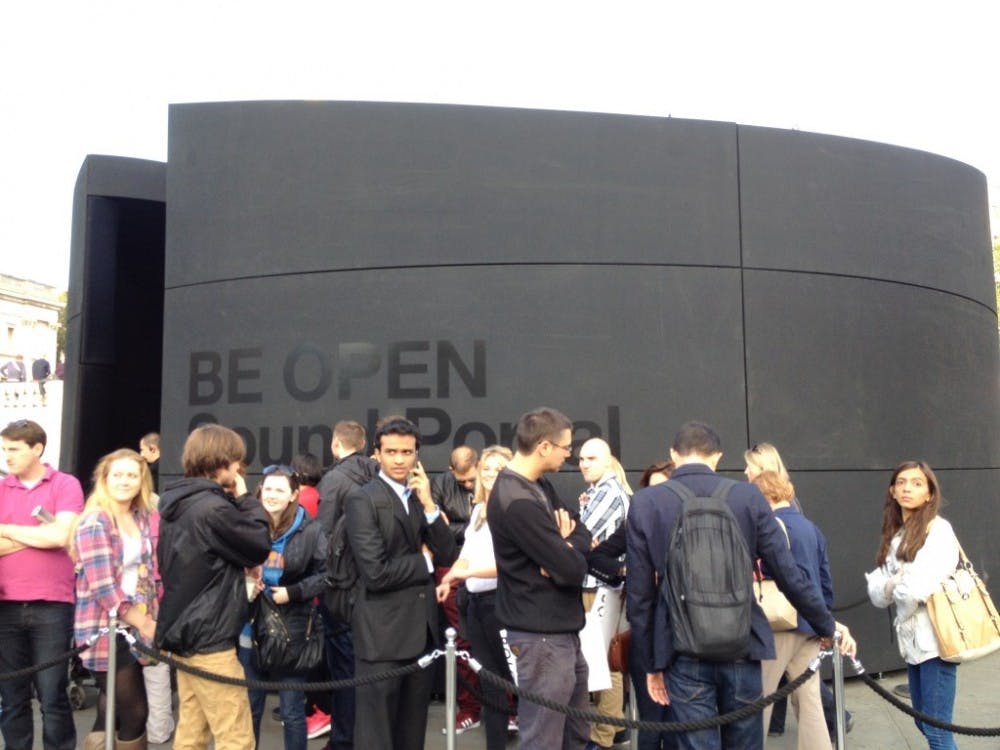LONDON — During the weeks following the close of the Paralympics, visitors to Trafalgar Square, a cultural center in the city of London, found an interesting object in the middle of the square: a large black metal orb.
To passersby, it probably looked like an eyesore, but to those emerging from it, this exhibition was eye-opening.
The artistic display, called “BE OPEN Sound Portal,” was just one of more than 300 events set up by The London Design Festival, which ran Sept. 14 - 23 throughout the city. The portal played different pre-recorded musical soundtracks daily for those who entered the orb. Designed to surround listeners with sound, this miniature concert hall was an oasis placed in the middle of one of London’s busiest centers, according to Mel Taccay, a volunteer at the exhibit.
The location, because it was in the middle of one of the city’s biggest tourist attractions, made this exhibit particularly interesting to many people. Locals Lara Wind and Kristina Charchalis had been passing through the square when their friends said they wanted to take a look at what the exhibit was all about.
Wind said they had been expecting a live music performance, but they still enjoyed the exhibit.
“The installation just has all the speakers surrounding it,” Charchalis said. “And when you close your eyes, you sort of get more of the sensory perspective of it because it sort of surrounds you, and it’s really lovely, but I guess it’s a bit different to what you’d normally expect when you see live music.”
The Sound Portal is just the tip of the iceberg when it comes to some of the festival’s previous innovative installations. The festival, now in its 10th year, has featured life-size chess pieces and robotic arms from Audi factories which were designed to write LED light messages in the air, Taccay said. Next year, she said, it could be completely different.
This year has been particularly interesting for arts in the city because, while London mayor Boris Johnson has continually made art and culture a priority since he has been in office, the artists commissioned to work on Olympic projects had to work extra hard for the big event. Although some residents like Taccay thought London’s high standards for artistic projects would begin and end with the Olympics and Paralympics, they have been pleasantly surprised by the continued high standards for major arts projects in the city.
“London’s just turned into a crazy town but a good crazy town,” Taccay said. “We thought (after the Olympics) that London would turn into its, ... I don’t want to say, miserable, sad self but no — it’s been brilliant.”
Taccay says that the atmosphere in London has been great since the city got the Olympic bid, with improvements in transportation and the arts to accommodate and entertain the large numbers of people who would be coming to the city.
“When we first got the bid, everybody’s like, ‘Oh no, everything’s gonna be a bit different,’” Taccay said about the city becoming busier before the Olympics. “But it’s not really changed anybody’s opinion that much. If anything, everybody’s proper into it, proper into London at the moment, and to be honest, I probably wouldn’t have it any other way.”


